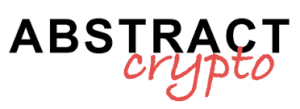Homium has obtained a $10 million financing and has started tokenizing mortgage loans on Avalanche. Currently, the loans are operational in Colorado with plans for expansion to other states.
Let’s see below all the details.
Homium’s innovation in home loans on Avalanche
As anticipated, Homium, a mortgage provider and real estate securitization platform, has introduced its first home purchase loans on Avalanche.
This move comes in a context where the tokenization of real-world assets (RWA) is gaining more and more popularity, with forecasts that the market could reach 10 trillion dollars within this decade.
Tokenization involves creating a digital representation of a physical asset on a blockchain, in the specific case of Homium, it refers to loans for the purchase of houses.
Currently, the loans offered by Homium are available in Colorado, but the company has plans to expand to other states. In the context of the guarantee for these loans, homeowners offer a portion of the appreciation of the value of their property.
Investors who want to finance these loans receive a tokenized asset that tracks the appreciation of the value of a pool of shared home purchase mortgages issued by Homium.
The goal is to release trapped equity in homes and address the challenges of housing access in various scenarios.
Homium also offers institutional investors an investable asset through digital securities backed by homeowners’ equity.
Tommy Mercein, CEO of Homium, commented as follows:
“Homium is creating a new class of assets for institutional investors, providing a new source of uncorrelated and inflation-protected yield in their core portfolios.”
Furthermore, the company has recently completed a Series A funding round, raising 10 million dollars. This round was led by Sorenson Impact Group and Blizzard, the fund of the Avalanche ecosystem.
Avalanche itself has allocated 50 million dollars for the purchase of tokenized assets created on its layer 1 in July of last year, ranging from stocks, credit, real estate, and commodities.
Perspectives of the tokenized asset market
As mentioned, the market for tokenized assets could reach colossal proportions within the next ten years, as traditional financial institutions (TradFi) continue to embrace blockchain technology.
This is what the digital asset management company 21.co claims in a recent report.
According to the report, “The convergence between cryptocurrencies and traditional asset classes, including fiat currencies, stocks, government bonds, and real estate, is experiencing unprecedented growth.”
It is estimated that by 2030 the market value for tokenized assets could range from $3.5 trillion in the most conservative scenario to $10 trillion in the most optimistic scenario.
This forecast from 21.co adds to a series of recent reports and forecasts on the potential of tokenizing real-world assets (RWA).
A key trend in the cryptocurrency sector that aims to bring traditional financial products such as private equity, debt, and real estate onto the blockchain.
Specifically, Bank of America suggested that tokenization could revolutionize the existing financial infrastructure, improving efficiency, reducing costs, and optimizing supply chains.
Meanwhile, a report from the Boston Consulting Group estimated that the market for tokenized assets could even reach $16 trillion.
According to analysts at 21.co, cryptocurrencies are going through a phase of maturation, with more traditional institutions increasingly embracing blockchain technology and building products on top of it.
The report states:
“Cryptocurrencies are moving from frenzy to synergy. Through this transition, cryptocurrencies will increasingly integrate with existing financial software and bring RWAs on-chain through tokenization.”


